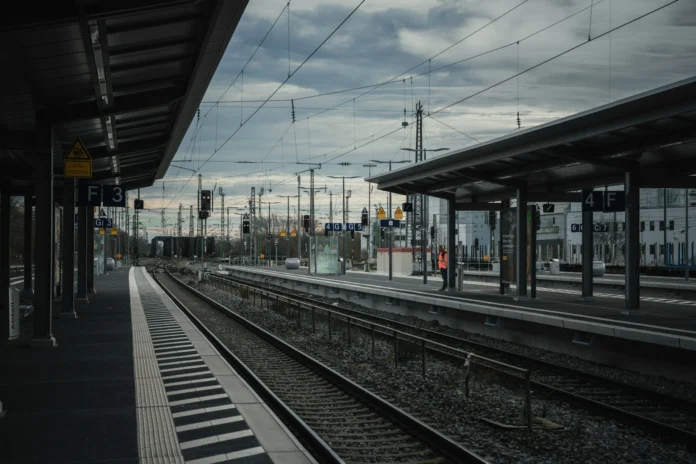Railways have long been more than just a means of getting from one place to another. They are the steel pathways that knit cities, regions, and nations together. From the early days of steam locomotives to today’s high-speed trains and advanced freight systems, railways have played a defining role in shaping modern infrastructure. Their impact extends beyond transportation, influencing urban planning, economic growth, sustainability, and technological progress.
Table of Contents
A Historical Foundation for Modern Growth
The development of railways in the 19th century marked a turning point in industrial history. Rail systems enabled goods, raw materials, and people to move quickly across great distances. This mobility allowed industries to flourish, trade to expand, and cities to grow. The placement of rail stations often determined the future hubs of commerce and community life. Even today, many of the world’s major cities owe their layouts and growth patterns to the introduction of rail transport.
Railways and Urban Planning
Railways continue to influence how cities are built and how people move within them. Transit-oriented development (TOD), for example, is a planning concept centered on rail stations. By clustering housing, workplaces, and shops around train lines, cities reduce reliance on cars, minimize traffic congestion, and create vibrant, walkable communities.
High-speed rail lines also reshape geography in practical terms. When cities are connected by trains that travel at 200 miles per hour, commuting patterns change dramatically. Regions that once felt distant become part of a single economic zone, strengthening business ties and broadening opportunities for workers and residents alike.
Driving Economic Development
Rail development remains a major engine of economic progress. Freight rail, in particular, forms the backbone of global supply chains. From coal and steel to consumer goods and agricultural products, trains efficiently move massive volumes that trucks alone cannot handle. The cost-effectiveness of rail freight keeps industries competitive and economies growing.
Passenger rail also contributes to local economies. Stations bring foot traffic that supports small businesses, while rail construction projects create jobs in engineering, construction, and technology. Governments often view rail investment as a long-term catalyst for prosperity, especially in rapidly developing nations where infrastructure gaps limit growth.
Railways and Sustainability
One of the most significant contributions of railways to modern infrastructure lies in sustainability. Compared to cars and airplanes, trains are far more energy-efficient and environmentally friendly. Electrified rail networks, in particular, dramatically reduce greenhouse gas emissions, especially when paired with renewable energy sources.
Railways also help alleviate urban pollution and congestion. By encouraging commuters to shift from personal vehicles to trains, cities can reduce traffic gridlock, improve air quality, and create quieter, healthier environments. As the world faces increasing climate challenges, rail development is emerging as a cornerstone of sustainable infrastructure strategies.
Technological Innovation on the Tracks
Modern railways are at the forefront of technological progress. High-speed trains in countries like Japan, China, and France showcase engineering feats that push the limits of speed, safety, and comfort. Maglev (magnetic levitation) trains, which hover above the tracks using powerful magnets, promise even faster and smoother travel in the near future.
Digital technology is also transforming rail operations. Smart signaling systems, predictive maintenance using AI, and real-time passenger information all improve efficiency and safety. Freight rail benefits from automation and advanced logistics, ensuring goods reach their destinations faster and with fewer delays. These innovations make railways not just a legacy system, but a future-oriented solution.
Challenges and Opportunities Ahead
Despite their many advantages, railways face challenges. Building new rail lines requires massive investment, careful planning, and coordination with local communities. Land acquisition, environmental concerns, and political debates can slow projects. In some regions, outdated rail infrastructure struggles to keep up with modern demands, requiring costly upgrades.
However, these challenges present opportunities for innovation and collaboration. Public-private partnerships, international cooperation, and smart financing models are helping overcome barriers. As cities and nations commit to greener, more connected futures, rail development is poised to remain a priority.
Also Read : Essential Steps for Hiring a Web Developer
In Conclusion
Railways are far more than remnants of the industrial age—they are powerful drivers of modern infrastructure. By fueling economic growth, linking cities, cutting carbon emissions, and inspiring technological progress, railways continue to shape nearly every facet of contemporary life.
As populations expand and sustainability becomes increasingly urgent, these steel pathways will remain vital. Reliable steel supply, such as what’s available in Salt Lake City, plays a crucial role in building and maintaining the rail systems that connect people, communities, and economies. Progress on the rails isn’t just about speed—it’s about creating sustainable, resilient connections for the future.
